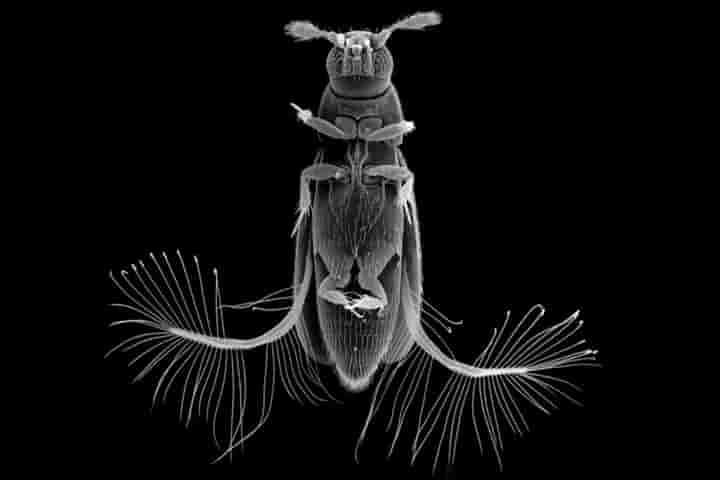They may be very small in size but their ability to fly is amazing! They are the featherwing beetles who are among one of the smallest flying insects and their ability to zip at a great speed intrigued scientists who have finally figured out how they do it as per a report in sciencenews.org.
Reporting about it online in Nature, the researchers disclosed that it was the wide wing stroke in tandem with bristled wings that are lightweight, that enabled these beetles to propel themselves competently through the air.
Among the featherwing beetles there are some species which are very, very small. To highlight this feature consider taking two such insects and placing them end to end. Their thickness would hardly be equal to that of a credit card’s thickness. With such tiny dimensions, they face serious obstacles in flying like viscous air and friction in the air.
Also read: Clever fish ward off predatory birds by creating giant wave
Yet, in study in the past done by entomologist Alexey Polilov of Lomonosov Moscow State University in Russia and colleagues, it was found that these insects could fly at speeds that are comparable to that of beetles, who are bigger than them by three times.
This flying skill and prowess was examined by Polilov and his team by studying one of the smallest featherwing beetles, Paratuposa placentis. For observing them during their study, they used high-speed video and computational simulations.
What the team found was that the beating of the wings by the beetle was unlike anything that had been earlier found and described. The scientists discovered that the beetle’s wings made a wide, figure-eight pattern. This they did by clapping together at the top of their upstroke to reduce drag and meeting again at the bottom of the downstroke. What this wide motion achieved for them was the extra power which was required to push through the air.
Importantly, the wings of the beetle are made of bristles. This is vital since the air friction at these small sizes allowed the bristles made wings to have power of flapping the wings like that of those made of membranes, the type a housefly has but for a lot less mass.
Talking to the media, Polilov said: “The bristled wing rows almost as well [as membranous wings] without letting much air through, like the feather of a bird.”
The scientists revealed that footage of the recordings of some other featherwing beetles depict that these other species too have a similar flying style.
The predecessors of the beetles were bigger than their present day kin. What this study brings to the fore is how insects are able to retain important athletic abilities as they scale down in size.




















